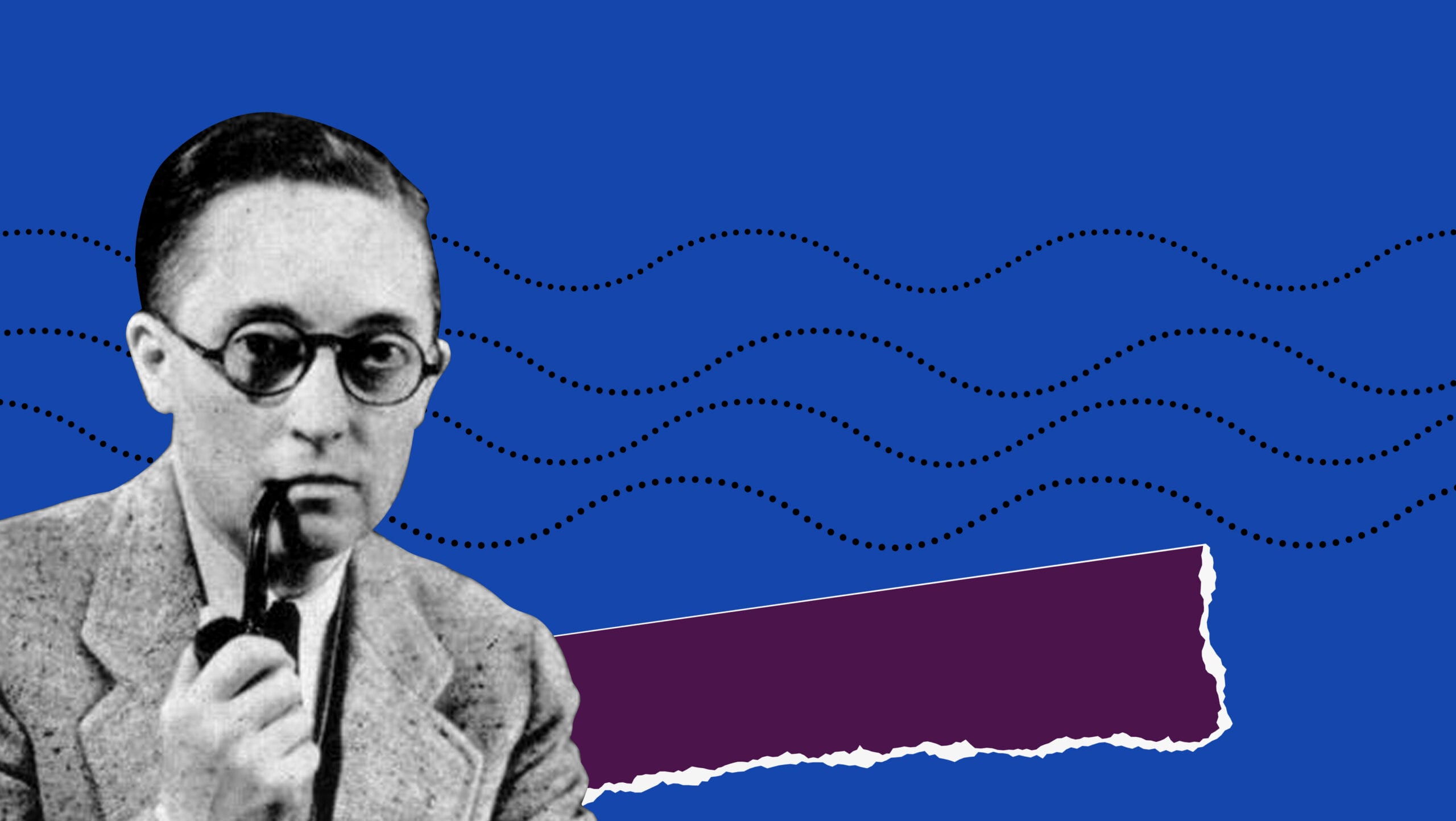Over one hundred years ago, an infectious disease that mainly affected the lungs was the leading cause of death in the U.S. Spread from person to person through droplets released into the air by coughs, sneezes, or speaking, Tuberculosis (TB)—also known as consumption at the time—was a major public health issue, one not unlike the novel coronavirus today. And while many doctors over many decades have contributed to major advancements in containing TB, it’s worth noting the little-known LGBTQ2 contribution: Dr. Alan L. Hart, a trans doctor who helped flatten the TB curve over a century ago.
Hart’s research into using X-ray technology (which had only been discovered when Hart was a child) to detect TB early became one of the most significant, cutting-edge diagnostic techniques. In years prior, the disease often wasn’t discovered in a patient until they were dying—but with Hart’s new methods, doctors could treat a patient before the disease advanced too far. Deaths attributed to TB plummeted shortly after word of his research spread.
In the late 19th century, one in seven (about 46 million) people living in the United States and Europe died from TB. Rates of infection began to steadily decline during the 20th century with the help of prevention efforts like public education about hygiene. With antibiotics and eventually a vaccine, today’s TB-related deaths are dramatically lower than when the disease ravaged much of the world over a century ago. In the U.S., for example, there were 515 deaths attributed to TB in 2017.
While today’s doctors fight to see such a dramatic drop in COVID-19-related death rates, Pride Month is the perfect time to remember LGBTQ2 contributions to infectious disease advancements like Hart’s. And Hart was not only a pioneer in the medical profession—he is thought to be the first trans man in the United States to receive a hysterectomy.
Dr. Hart was born in Kansas in 1890, assigned female at birth. His father died of typhoid fever in 1892, which would later inspire Hart to dedicate his life to public health. After his father’s death, Hart’s mother, Edna, moved the family to Oregon where her parents lived, and Hart became close to his grandfather. According to Peter Boag’s “Go West Young Man, Go East Young Woman: Searching for the Trans in Western History,” Hart “played boy games…‘did a boy’s work about the farm’” and “always regarded [himself] as a boy.” Hart’s grandparents accepted him as a boy from an early age; in their obituaries, Hart was referred to as their grandson.
Hart knew he was a boy from a very young age, and longed for his physical appearance to reflect his identity. Boag writes he, “thought [he] would be a boy if only the family would cut [his] hair and let [him] wear trousers.” Once an undergrad at what is now Lewis & Clark College in Portland, Oregon, Hart began dressing in more masculine clothing. Later, at the University of Oregon Medical School (now Oregon Health & Science University), he began researching his “condition”—what he at first believed to be same-sex attraction, which was known at the time as “sexual inversion.” While he knew he was attracted to women, he also knew he was a man, despite having never heard of people transitioning from one gender to another before. According to his psychotherapist, Joshua Allen Gilbert, Hart saw transitioning as a “chance to meet the difficulty and correct it, if possible; at least, to do the best for the condition that could be done.”
It was in medical school that Hart completed his transition. By the time he graduated as a doctor in 1917 (top of his class, no less), Alan Hart was presenting full-time as male with his newly legally-changed name.
While the perspective of the medical literature from a century ago on identities we now know as trans was far from affirming, Hart thankfully sought the help of one of his professors, the aforementioned Dr. Gilbert, while attending med school. Dr. Gilbert helped Hart accept himself—he provided Hart with psychotherapy and performed his hysterectomy in 1917.
In a 1918 interview, Hart said of his transition: “I had to do it…For years I had been unhappy. With all the inclinations and desires of the boy I had to restrain myself to the more conventional ways of the other sex. I have been happier since I made this change than I ever have in my life, and I will continue this way as long as I live…I have long suspected my condition, and now I know.”
In the 1910s, hysterectomies were “seen as a full-sex change, which speaks to how gender was perceived medically,” writes Ari Mejia in OutHistory. “The removal of the female reproductive organs deemed Alan medically male.”
Despite the potential to have others respect him as male, Hart ran into problems with transphobia for the rest of his life. Meija continues: “The first time Hart had to relocate and resign from a position happened in the same year of his surgery, 1917. He was appointed at a hospital in Portland as a male but when there was recognized by a former classmate, Alan felt he had no option but to resign.”
Hart had to move many times all over the country because of similar situations, forced to resign after someone learned of his medical past. He wrote novels and short stories to supplement his income and as an emotional outlet for his experiences.
Despite the discrimination he faced, Hart achieved incredible medical advancements during his career. As mentioned, his groundbreaking research in X-ray technology aided doctors in the early detection of TB, saving thousands of lives. Part of what allowed him to share his research was the confidence and increased safety that came with taking synthetic hormones, a medical option that only became available after World War II—many years into his career. After his voice changed in the late 1940s, he embarked on national speaking tours that provided doctors with valuable lectures on TB care.
Megan Springate, post-doctoral associate at the University of Maryland, first learned of Hart while working on the LGBTQ Heritage Theme Study for the U.S. National Park Foundation and U.S. National Park Service. “What struck me is that I had not heard of him, even though he was instrumental in minimizing the spread of tuberculosis,” Springate says. “The techniques he developed were used around the world to identify those infected before they began showing symptoms. This was a big deal, because we didn’t have antibiotics then to treat the disease, so stopping the spread meant early detection and isolation.”
Susan Stryker, professor emerita of Gender and Women’s Studies at the University of Arizona, Barbara Lee Professor of Women’s Leadership at Mills College and author of Transgender History, believes that telling transgender history is complex. But when it comes to Hart, “he very clearly chose to live as a man and did not want his pre-transition life connected to his post-transition life. So I avoid using his pre-transition name and use he/him.”
However, many others have not done the same. The majority of historical sources and articles that speak of Hart deadname him. While Stryker acknowledges there is no “one-size-fits-all answer” because historians need to know birth names to do their research, “That doesn’t mean it needs to be explicitly mentioned in a publication,” she says.
In addition, Stryker and Springate agree that there are multiple possible answers to whether we can use the modern term “transgender” to describe someone from a time when that word did not exist; Hart could not have self-identified as transgender. But what’s more important than how we label these stories is whether we tell them at all.
“Gender variance is a persistent part of the human experience, and trans history helps document that at a moment when trans, non-binary and gender-variant lives have heightened vulnerability to state-sanctioned and extralegal violence and discrimination, rooted partly in the belief that transness isn’t really a thing (or if it is a thing, it’s a fad, or not important),” Stryker adds.
Despite what deniers may say, trans people have made countless significant contributions to society through all of human history, from medical fields to technology to music. Even though the language to describe them has frequently changed, trans people have always been here—and they matter.
As doctors in the present who work tirelessly to improve treatment options and to eventually find a vaccine for the novel coronavirus, we must remember the frontline doctors of the past who paved the way. Alan L. Hart’s name deserves to be celebrated during Pride Month and beyond as one of many LGBTQ2 medical professionals who have advanced the field, and who would have joined the fight against COVID-19 if they were alive today.


 Why you can trust Xtra
Why you can trust Xtra


